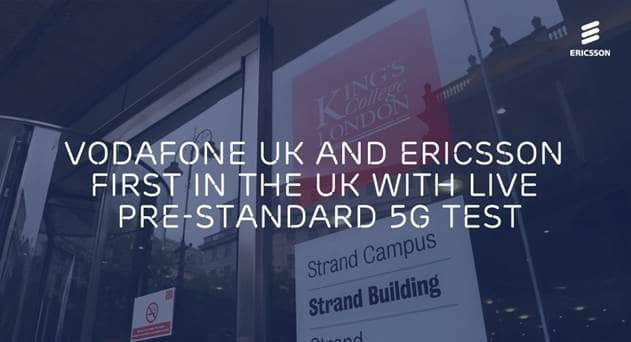Vodafone UK and Ericsson, in partnership with academics at King’s College London, have successfully tested standalone pre-standard 5G using a prototype device in a central London 3.5 gigahertz (GHz) spectrum field trial.
Vodafone said it will continue to test 5G technology and evaluate opportunities to provide better services to consumers and businesses prior to its commercial deployment from 2020. The live trials will help to establish the innovative uses of 5G services that will benefit both industry and society in the future – in areas such as factory automation, smart energy grids and remote surgery.
Engineers were able to showcase a number of technologies at King’s College London, including Massive MIMO. The project is also combining or “aggregating” different bands of mobile spectrums across the UK to increase capacity and boost data speeds. By combining four bands of spectrum, for example, Vodafone enables the latest smartphones to achieve data speeds in excess of 500 megabits per second (Mbps).
Vodafone UK signed an aggreement with Ericsson in June to evolve its 4G networks in London and southern England using technologies such as Massive MIMO and Carrier Aggregation, which will help deliver improved capacity and end-user performance.
Last year,
Marielle Lindgren, Head of Ericsson in the UK and Ireland
Supporting our customers in making 5G a reality is key for us. This is a live trial in a densely populated central London urban area and the first time in the UK that we’ve been able to show pre-standard 5G working independently.
Kye Prigg, Head of Networks, Vodafone UK
We’re delighted to be the first provider to test standalone 5G in the field, however, building a 5G network will take time. Right now, we’re also modernising our network by making smarter use of our existing mobile technology to keep ahead of consumption demands and provide the mobile coverage our customers deserve.


















